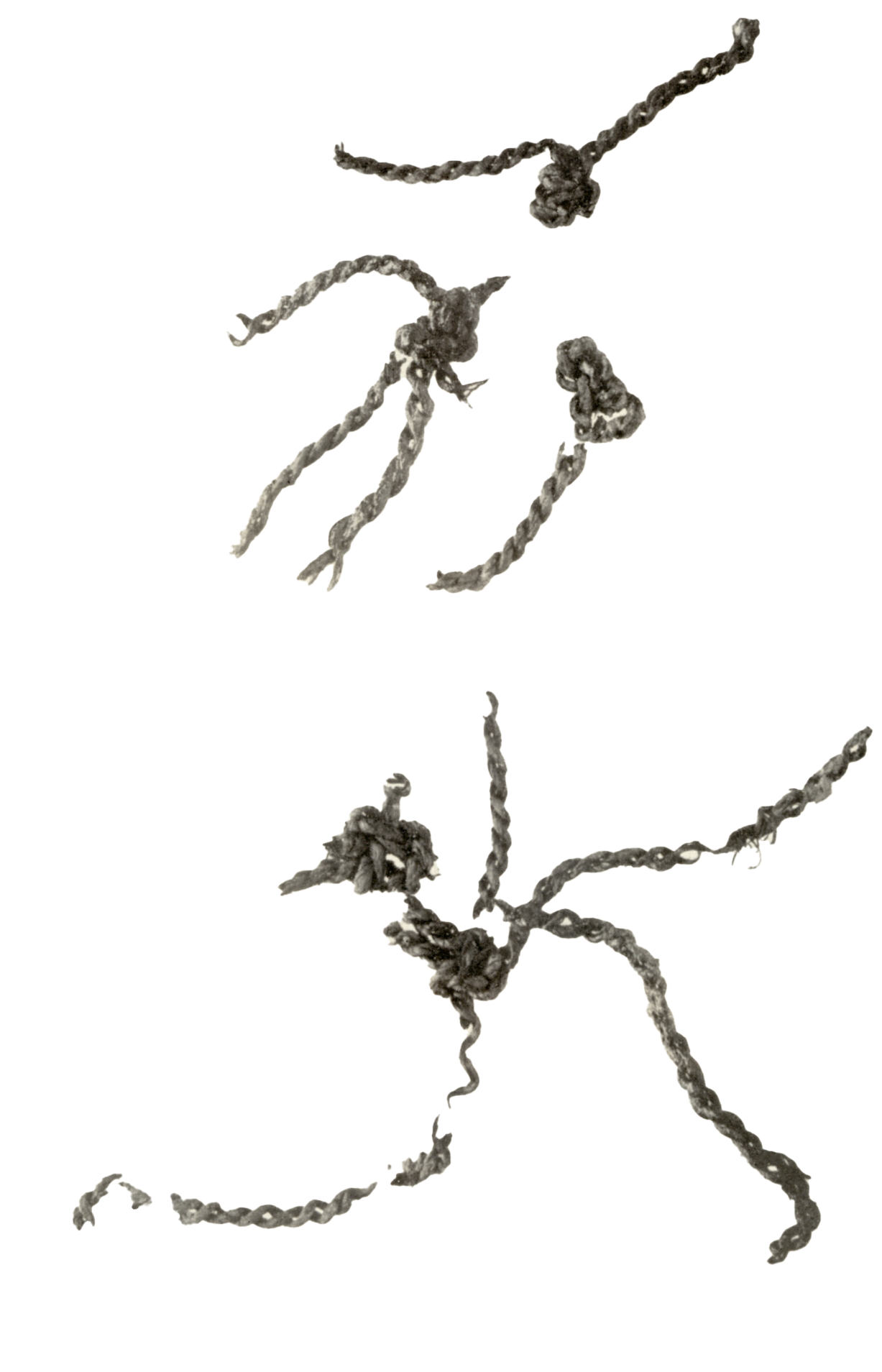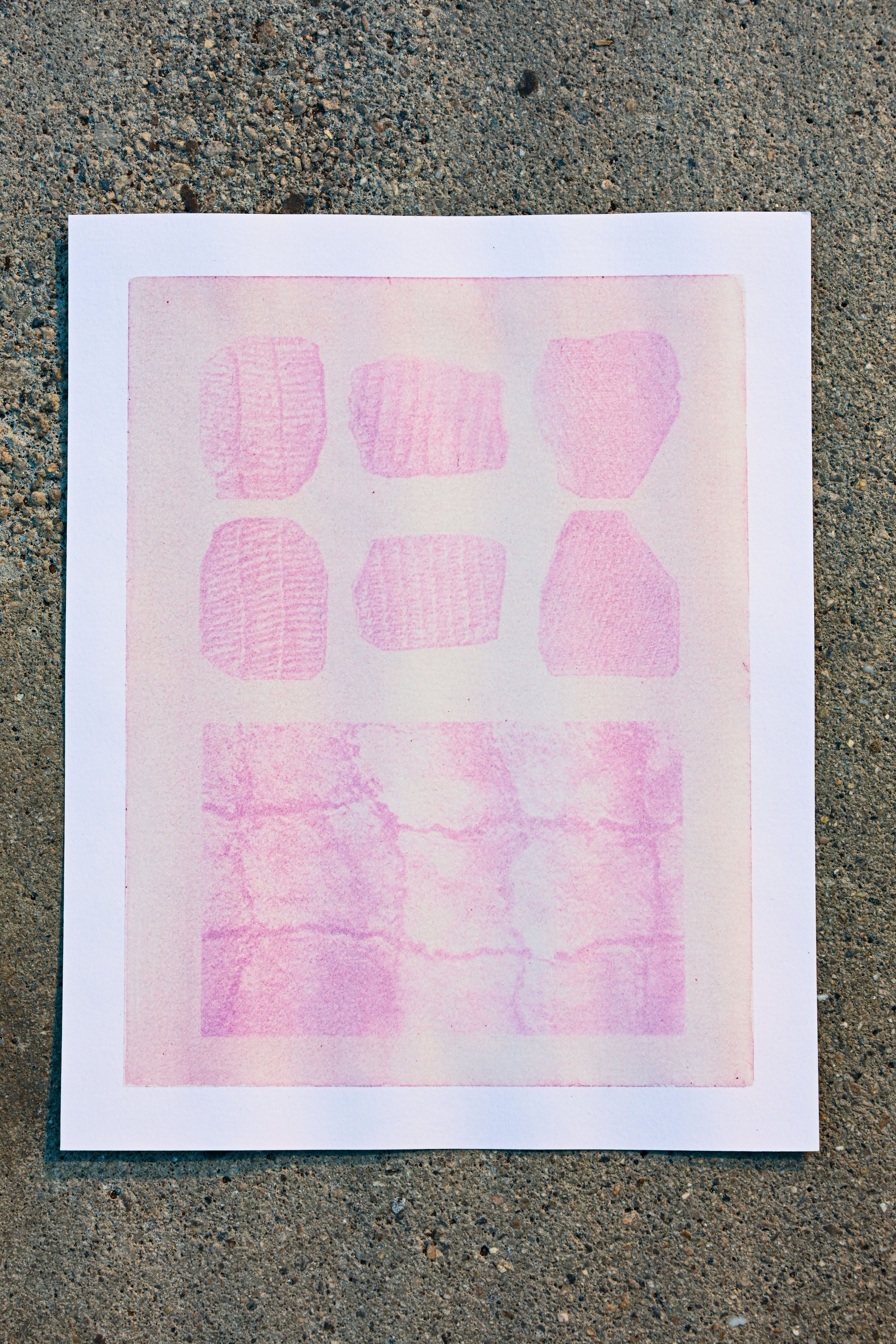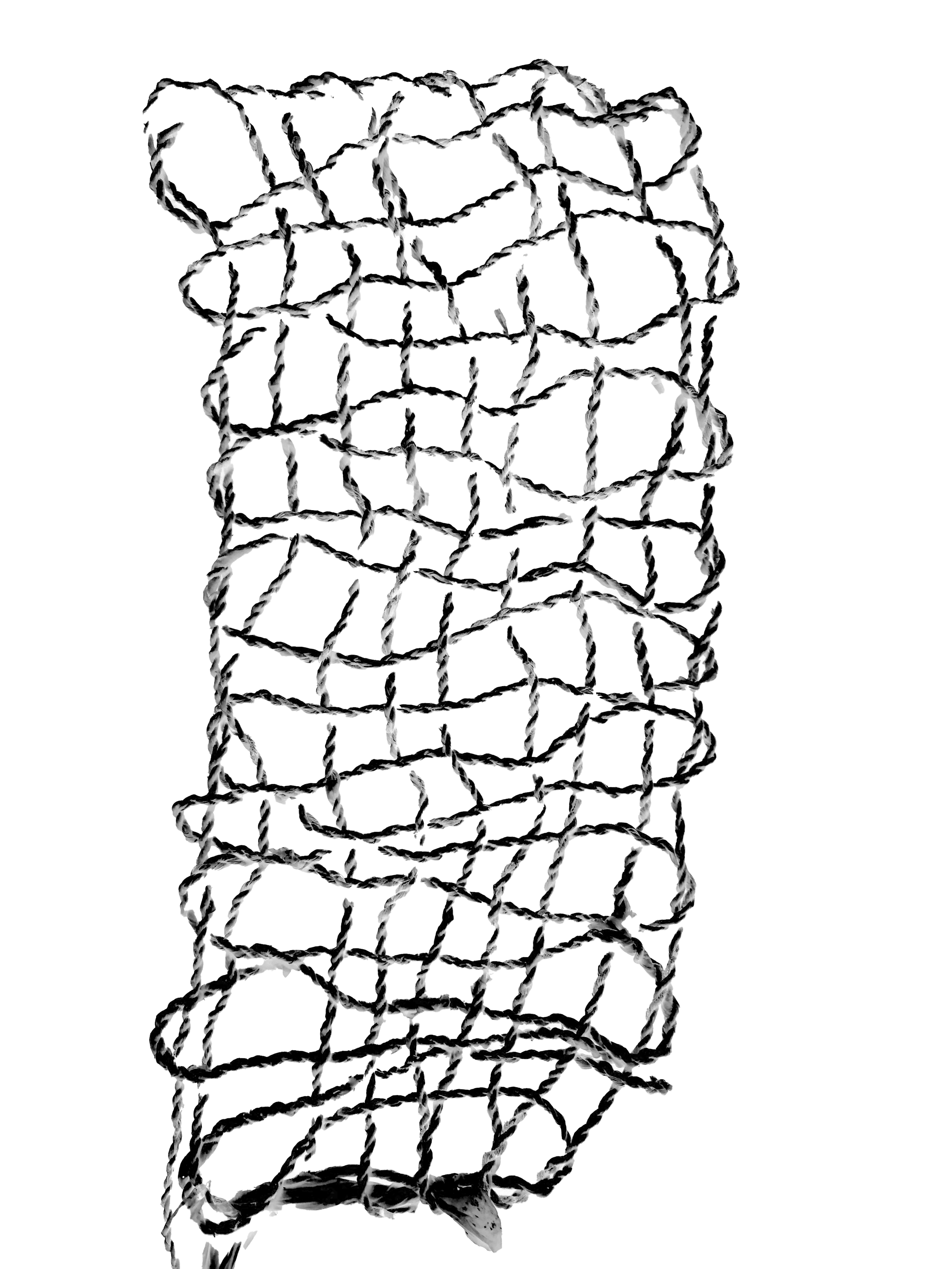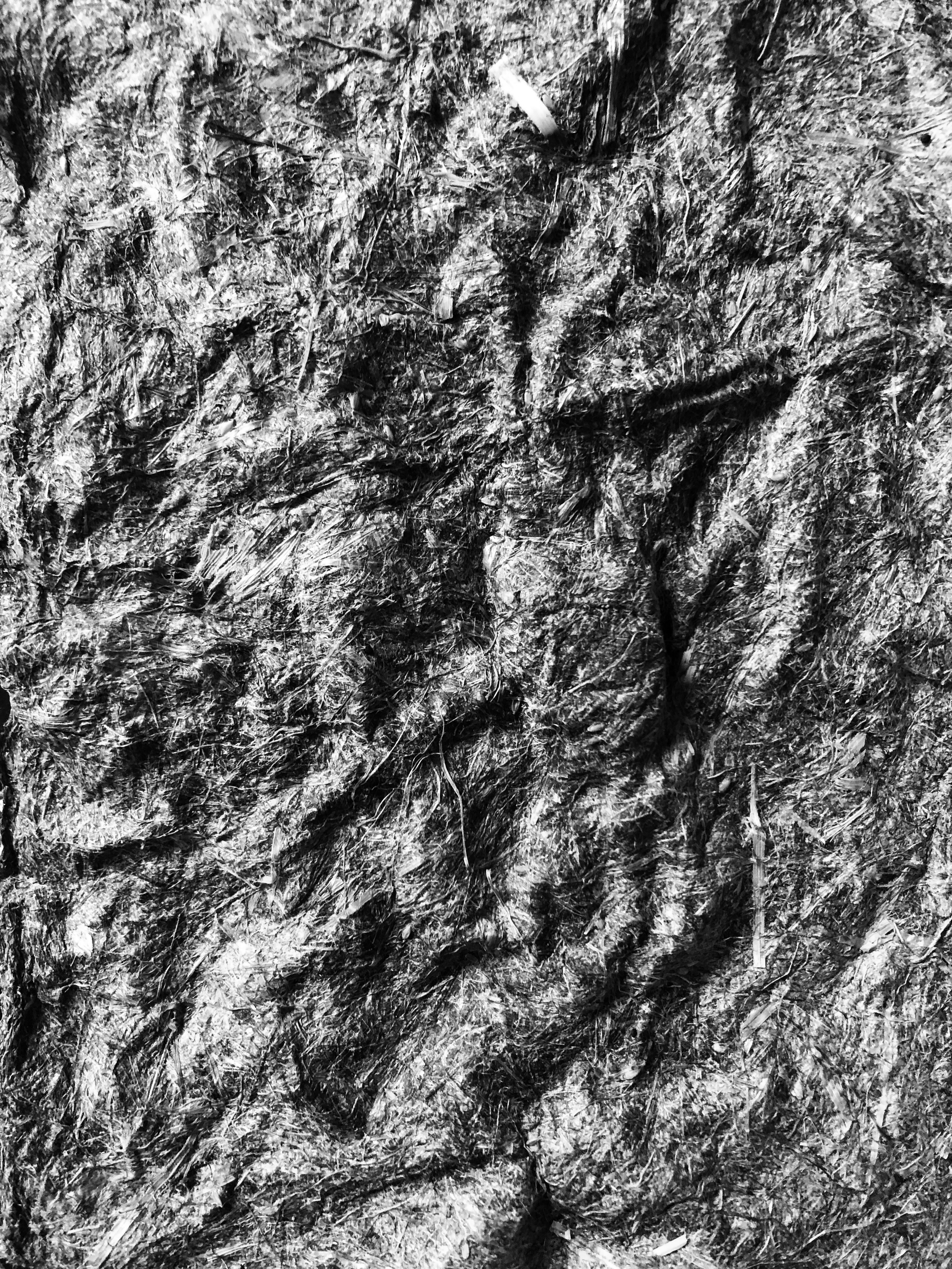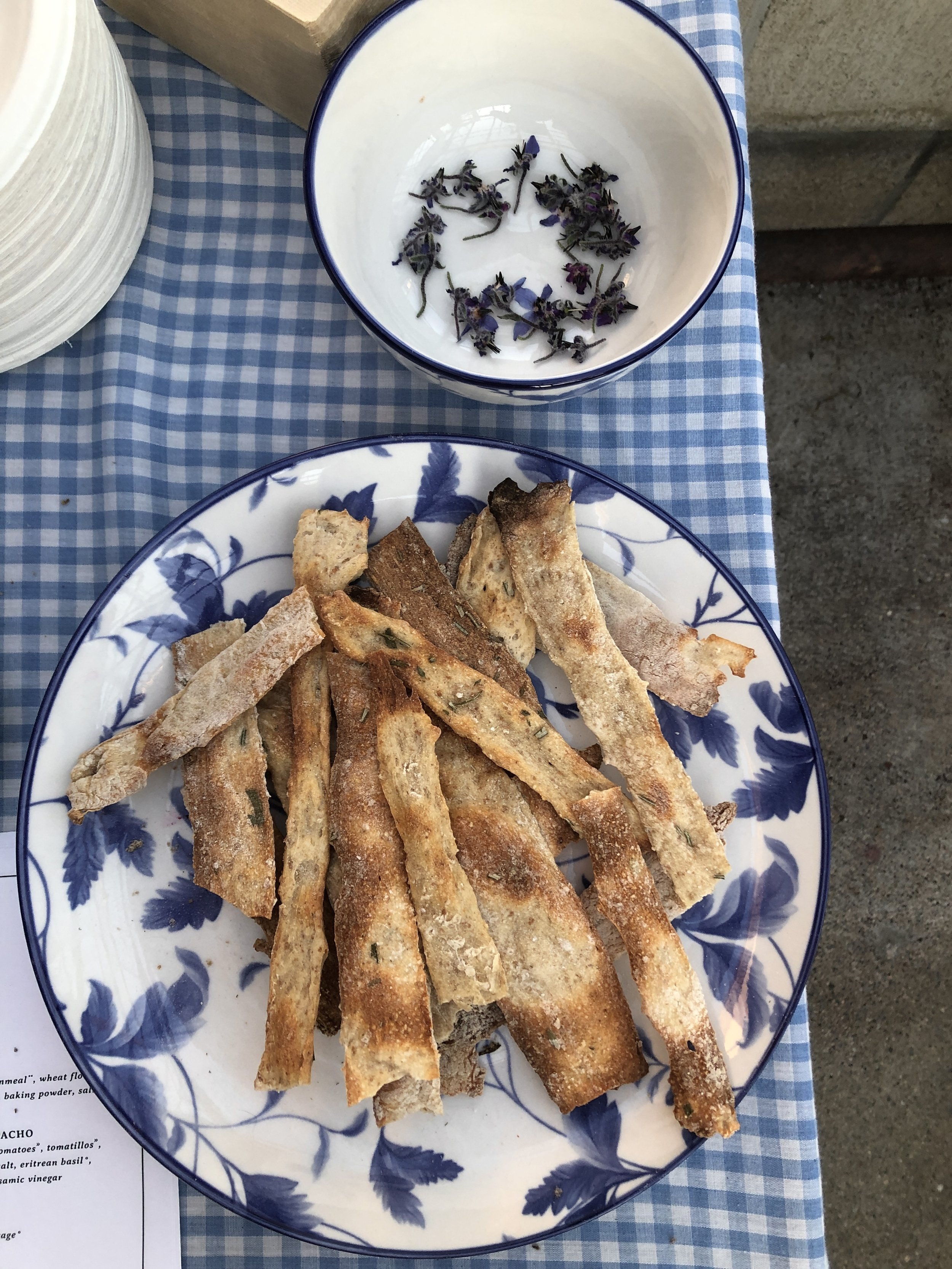Antrea Net, 8540 BCE
TWINING, TENDING, TEDIOUS, TENUOUS (2022)
Textiles are perishable and rarely survive time. Global historical ceramics, specifically cord-marked pottery used for cooking, present the evidence of a textile and the tedious labor of women’s work. The textile installation, displayed in a working greenhouse, presented a pseudo-net made from the handspun paper cordage of urban grocery store circulars: a material that appears weekly and regenerates indefinitely. Making string is one of the oldest traditions of ‘women’s work’: work typically performed by those in proximity to raising children or tending to domestic environments. The act of making string is participating in a 40,000 year old textile tradition; a repetitive, meditative movement that was once essential to our survival as a species.
Behind the pseudo-net was a large embossed sheet of handmade paper from found, foraged, and waste materials. This sheet offered the evidence of the paper net: a fragile, temporary object that would be destroyed if it were to be used as intended. These textiles recall the salience of string in human history, and the ways that technological advancement has changed our relationships to food, surplus, economic exchange, and traditional craft methods. The tenuousness of the installation reflects our fragile relationships to food sources and ecological systems.
A live photographic printing process was installed in the greenhouse and maintained over the course of one semester. This process uses anthocyanin and betalain: light-sensitive plant pigments found in blue-red-purple plants that contain antioxidant properties. As the sun moved over the greenhouse, the images were slowly exposed over a series of weeks. Highly sensitive to light, these pigments continue to fade over time, eventually dissolving entirely. At the culmination of the exhibition, the paper installation was composted at the URI farm.
The opening reception featured a menu of foods curated and prepared by the artist. The recipes incorporated plants used in the greenhouse installation, as well as wild-growing, native, regionally-significant and local ingredients. Organized for Some Food We Could Not Eat, curated by Rebecca Levitan at the University of Rhode Island.

